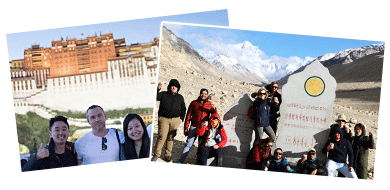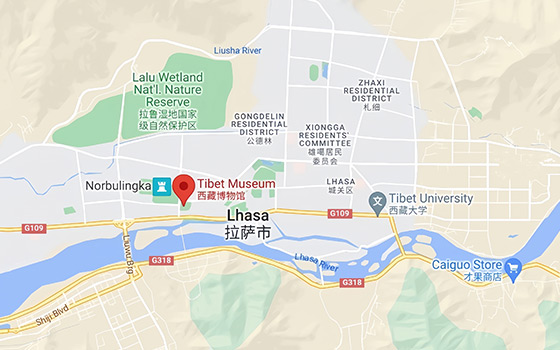
Tibet Tours for All around the Globle are Available Right Now!
It is the best time to join our Tibet small group tour in 2024 at the best local price.
 |
86-28-81754631
|

Covering an area of 23,508 square meters and with an exhibition area of 10,451 square meters, the Tibet Museum is located in the southeast corner of Norbulingka Summer Palace, Lhasa city. In order to achieve a quality service, safety and efficient administration, the museum has introduced some modern facilities. In this case, tourist from all over the world would have no difficulty in understanding them. For a better understanding of the tourists from all over the world, all the exhibitions here are introduced in Japanese, English, Tibetan and Chinese.
As 1 of the 62 "Aid-Tibet Projects", the museum was first built in July 1994. At the 50th anniversary of the Founding of the People's Republic of China and the 40th anniversary of Tibet's Democratic Reform, the museum was opened with the name inscribed by the former president Jiang Zemin.
The Tibet Museum is a unique building in Tibetan history. A Han Chinese architect from Sichuan province designed the museum with a wonderful combination of Tibetan and Chinese architectural styles. Step into the Prelude Hall, you can see the amazing ornamented beams, pillars, lintels, banners and wall hangings. Then you will find that the museum is sub-cataloged: on the first floor are two exhibition halls which shows the splendid history and natural resources of Tibet; on the second floor are 5 small exhibition halls displaying Tibetan religion, folk custom, treasures, and arts and crafts.
The Tibet Museum is also home for a rich collection of prehistoric cultural relics like Buddha statues in different postures, imperial jade seals, gold albums, gifts granted by emperors, colorful Thangkas, and various printed Sanskrit and Tibetan scriptures. There are also displays of varieties of folk arts such as unique Tibetan handicrafts, costumes, jewellery, and adornments made of gold, silver, and jade, as well as fine Chinese pottery.
The museum gives a comprehensive show of Tibetan civilization and plays an important role to preserve cultural relics. Besides, it also serves as the place to hold seminars and to encourage the archaeological study of Tibet. As a tourist site, the Tibet Museum offers information and inspiration to Tibetans as well as a large number of tourists from overseas. In addition, its educational function on the unique Tibetan culture will enrich modern people's spiritual life.
0 Comment ON "Tibet Museum"
Check All Tibet Travel FAQs Here